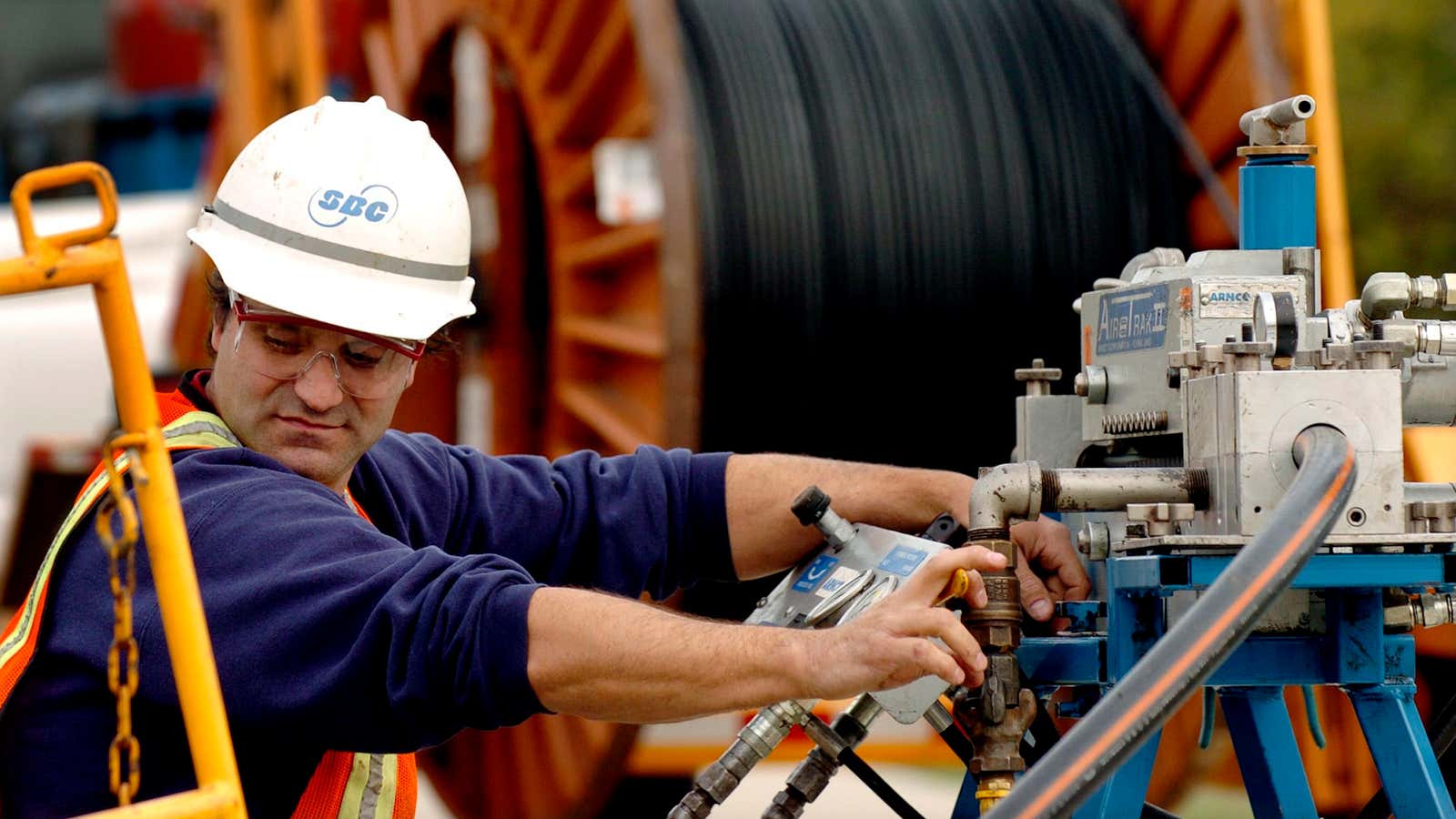If you’re an American hankering for the day when your internet access is cheap or even free, keep waiting. The Open Technology Institute at the New America Foundation released a new study on Oct. 28 concluding that broadband consumers in the US pay much more than their peers around the world. And US subscribers are actually paying internet service providers more money for less data at slower speeds. This was true both for mobile and wired networks.
Even more surprising, though, is who the researchers believe may be coming to the rescue: local municipal utilities and Google—the only players with the needed network infrastructure or capital to build their own new networks from the ground up and compete with broadband operators like Verizon, AT&T, Comcast and Time Warner Cable.
So far, the much-ballyhooed “triple play” or “bundle” offerings, in which internet service providers (ISPs) offer landline telephone lines, cable television, and wired broadband for a set monthly rate, haven’t really helped US consumers. US providers couldn’t even crack the world’s top 30 ranking of cities by bundle price (rankings were determined according to the cheapest plan available by broadband companies in the area). Bristol, VA came in at number 32.
Instead, Seoul, South Korea; Riga, Latvia; Paris and Berlin took the top four spots, respectively. In Paris, a triple-bundle with 20 mb/sec of download capacity comes out to $34.87 per month. By comparison, in New York City, a 15 mb/sec FIOS connection from Verizon will set you back $69.99 per month.
The US fared slightly better in terms of the speed of in-home broadband. Kansas City (both Missouri and Kansas) tied Seoul and Tokyo for first place, because of Google’s prototype Google Fiber service. That initiative, launched in July 2012, is a competition whereby US cities apply to Google to be outfitted with its fiber-optic network, granting its residents access to faster, cheaper data speeds. So far, Kansas City, Provo, Utah, and Austin, Texas have been winners. But while Google Fiber’s 1000 mbps rate matches that on offer in South Korea and Japan, its cost to residents, at $70 per month, is nearly twice as much.
Why the price disparity? Some analysts argue that the price differential reflects geographical differences, since US population centers are generally much more spread out than those in Europe. Others chalk up the difference to lacking competition in the US. The dominance of telecom giants AT&T, Comcastand Verizon in the US puts little pressure on broadband prices.
The concentrated US market also makes it hard for new players to compete because of the massive upfront costs of building broadband infrastructure (miles of cable and fiber, nationwide capacity for line maintenance and weather response, and expensive data hubs). Hibah Hussain, one of the study’s authors, told Quartz that open access policies “promote competition.” Such policies, enacted through local and federal legislation, would require incumbent companies to open up their pipes and lease capacity on their pipes to new providers.
At present, open access to that infrastructure is off of the table. Unlike in Europe, where governments often mandate that private broadband infrastructure be shared between companies, the Federal Communications Commission (FCC) classifies ISPs as “information” rather than “telecommunication” services, putting them out of reach of local authorities who could otherwise mandate open access to broadband infrastructure for smaller private companies. Changing those rules would require joint action of Congress and the US Federal Communications Commission (FCC). President Obama’s National Broadband Plan stopped short of mandating open access, issuing only weak “recommendations” to foster broadband growth.
So what can be done?
Public utilities, which have more access to the infrastructure of telecom giants, can play a part. Municipal utilities like the BVU in Bristol, VA and the EPB in Chattanooga, TN, have been able to capitalize on existing access to networks, street grids and utility poles constructed by private companies to build out infrastructural improvements. That access has allowed those cities to match the monthly rate and 1,000 mbps download speeds of Google Fiber. Without federal action to give local governments and smaller companies more power, telecommunications firms are unlikely to loosen their grip on the market. That makes municipal utilities and Google the next best hope for competitively priced broadband in the US.
